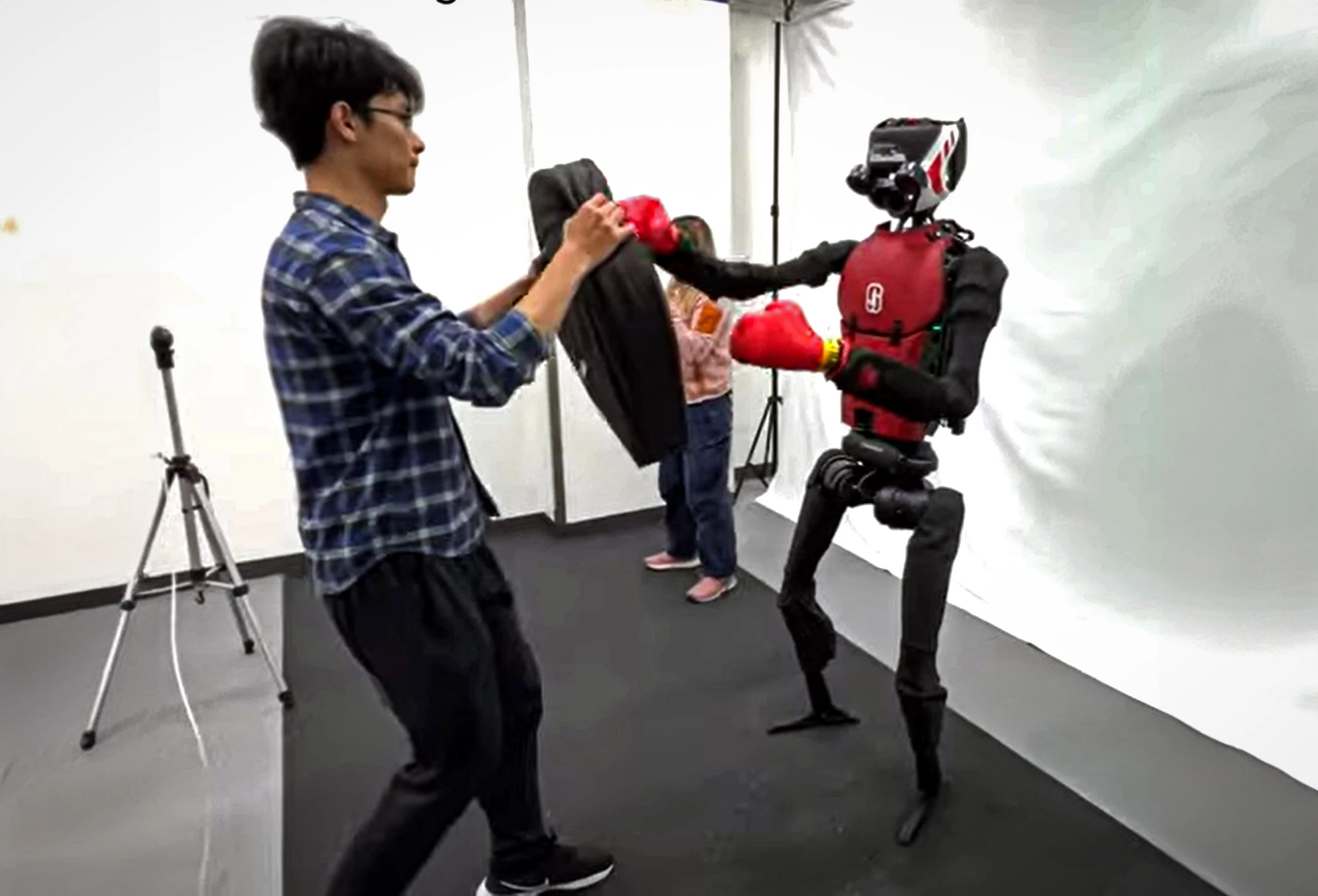Zipeng Fu, Qingqing Zhao, and Qi Wu, researchers at Stanford University near Palo Alto, CA, have developed a human-like robot, dubbed HumanPlus, that's capable of learning to autonomously do human tasks by first copying them. The team uses a full-stack system to aid in the robot's ability to learn from humans.
"We first train a low-level policy in simulation via reinforcement learning using existing 40-hour human motion datasets. This policy transfers to the real world and allows humanoid robots to follow human body and hand motion in real time using only a RGB camera, i.e. shadowing."
Introduce HumanPlus - Autonomous Skills part
— Zipeng Fu (@zipengfu) June 13, 2024
Humanoids are born for using human data. Imitating humans, our humanoid learns:
- fold sweatshirts
- unload objects from warehouse racks
- diverse locomotion skills (squatting, jumping, standing)
- greet another robot
Open-sourced! pic.twitter.com/jFzfES6mMf
On the HumanPlus website, there are at least a dozen video examples of the things the HumanPlus robot are able to do while shadowing, from playing the piano to playing ping pong. There are also quite a few examples of its learned autonomous abilities such as jumping, typing, and even greeting a fellow robot with a handshake.
It's slow, awkward, and pretty clunky in its tasks, but this is a humanoid robot that you or I can purchase right off the shelf today for the low price of US $90,000. The Stanford researchers have modified theirs to the tune of about $107,945 with the addition of hands from Inspire-Robots, wrists from Robotis, and Razer webcams for eyes, giving it 33 degrees of freedom.
The code used to create the HumanPlus is all open source on GitHub as well. With a little bit of know-how and a lot of dollars, you too could be training your very own 5'11 (180 cm), 104 lb (47 kg) robotic servant in your garage. The H1 even holds the world record for speed, able to run at 7.4 mph (11.9 kph) and can do backflips.
It doesn't look like much of a boxer, though, we have to say.
Introduce HumanPlus - Shadowing part
— Zipeng Fu (@zipengfu) June 13, 2024
Humanoids are born for using human data. We build a real-time shadowing system using a single RGB camera and a whole-body policy for cloning human motion. Examples:
- boxing🥊
- playing the piano🎹/ping pong
- tossing
- typing
Open-sourced! pic.twitter.com/DQgVDPiNnS
While it may look pretty wobbly, humanoid robot tech is still in its infancy, much like a human child learning how to walk. Many companies are betting these things will explode in capability in the coming years, and begin a revolution that may spell the end of human labor.
Source: Humanoid-ai.github.io






